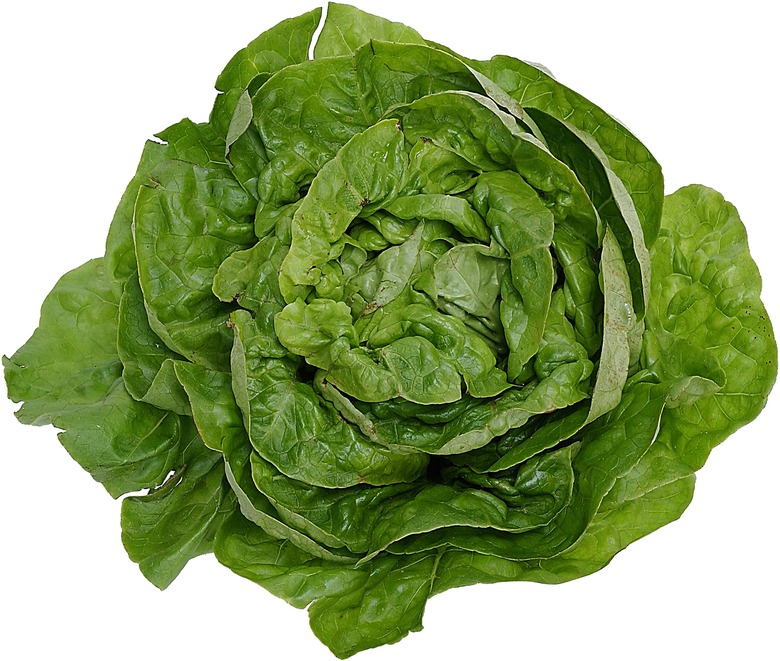How To Grow Mugwort And Germination Instructions
Fragrant, vigorous mugwort (Artemisia vulgaris) is so adept at muscling other plants out of the garden that it is hard to believe that you might ever have trouble growing the tall, bushy herb. Certainly once the plant is established in your garden, you're likely to find yourself having more mugwort than you know what to do with. Yet mugwort, which grows best in U.S. Department of Agriculture plant hardiness zones 4 to 8, is among those species that can have a poor germination rate if steps aren't taken to help it "wake up" from its natural dormancy.
Preparing Mugwort Seeds
Step 1
Mugwort seeds will achieve their best germination if they are first stratified for two weeks before planting. Stratification involves chilling seeds in a medium that can retain moisture. To work with mugwort seeds, mix the amount of seeds you will be planting with an equal amount of sand or peat moss that you've lightly misted. A sealed plastic bag or small lidded container works well to hold the mugwort seed mixture. The medium should chill in the refrigerator for about two weeks, but it's best to check it every few days to ensure the mixture still feels moist.
- Fragrant, vigorous mugwort (Artemisia vulgaris) is so adept at muscling other plants out of the garden that it is hard to believe that you might ever have trouble growing the tall, bushy herb.
- To work with mugwort seeds, mix the amount of seeds you will be planting with an equal amount of sand or peat moss that you've lightly misted.
Sowing
Step 1
Planting your mugwort seeds in early spring will also help break their dormancy period, because the colder soil enhances the chill started with stratification. Wait until the ground can be worked before adding compost, peat moss or sand to improve drainage. Mugwort isn't particular about pH levels or specific nutrients, but does prefer excellent drainage and full sun. Once you've improved the bed to your satisfaction, scatter seeds lightly but evenly on the soil's surface — about 3 inches apart in all directions. Seedlings should germinate within two weeks.
Seed Emergence
Step 1
Once mugwort seedlings have germinated and reached about 4 inches in height, it's time to thin them. Mugwort grows best when each plant is at least 2 feet apart from other plants. Remove extra seedlings by cutting them at the soil line with garden shears.
- Planting your mugwort seeds in early spring will also help break their dormancy period, because the colder soil enhances the chill started with stratification.
- Mugwort isn't particular about pH levels or specific nutrients, but does prefer excellent drainage and full sun.
General Care
Step 1
Once you've established your mugwort patch, avoid over-watering or over-feeding these herbs. Too much soil fertility can cause plants to fall over, as can letting them become shaded by other plants. If the mugwort becomes too tall or full to hold itself upright, consider staking the herbs or removing extra foliage from the top or sides with pruning shears.
Caution
Step 1
Mugwort is an invasive herb. Many people consider it a weed, especially in eastern portions of the United States. To limit its potential for mischief, choose a mugwort cultivar rather than common mugwort. The cultivar "Janlim," often sold with the trade name "Oriental Limelight," may be easier to control than common mugwort, according to Missouri Botanical Garden. Mugwort spreads by both rhizome and seeds. Removing flowering heads and setting rhizome barriers into the ground around your mugwort patch may slow the herb's spread. When all else fails, remain vigilant for signs of the seedlings popping up in areas other than your mugwort patch. Prompt weeding is key to controlling mugwort.
- Once you've established your mugwort patch, avoid over-watering or over-feeding these herbs.
- Removing flowering heads and setting rhizome barriers into the ground around your mugwort patch may slow the herb's spread.
References
- Missouri Botanical Garden: Artemisia Vulgaris
- Kansas State University Research and Extension: Germination Requirements of Herbs
- North Carolina State University: Overcoming Dormancy
- Saving Our Seeds: Growing Plants From Seed
- Outside Pride: Sowing Directions Mugwort
- Center for Invasive Species: Mugwort
